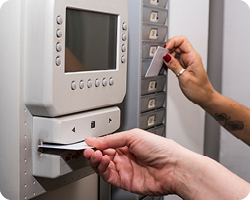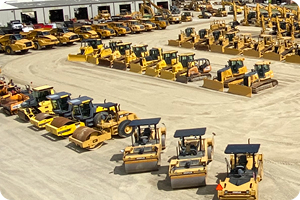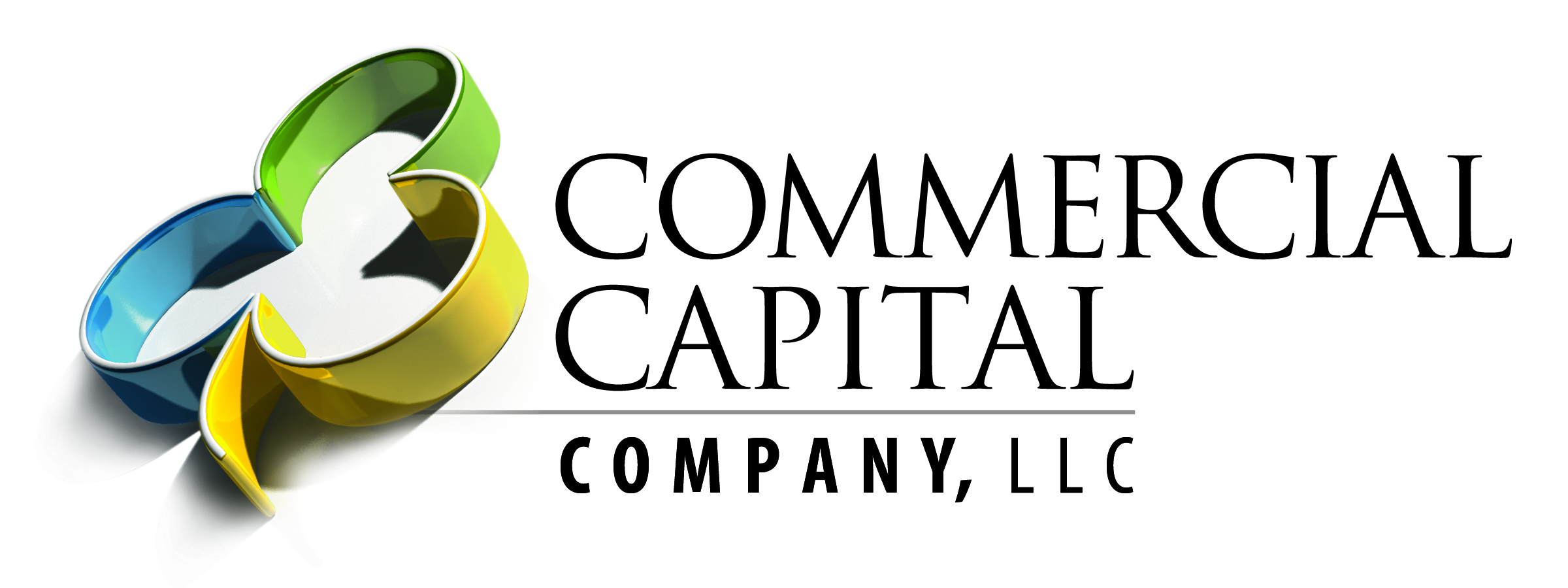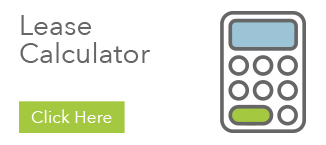If Not Now, When?
The Most Anticipated Recession Has Yet To Arrive
Current conditions so far indicate a resilient economy, although storm clouds are forming. A favorable start to 2023 has been diminished by bank failures, weakening consumer sentiment, and persistent inflation. Although, the most anticipated recession in recent memory has yet to turn into one.
Equipment Leasing & Finance Foundation projects the U.S. economy will enter a recession in the remainder of 2023 and grow by just 0.7%. Even with lower energy prices and supply chain improvements, the U.S. economy is expected to continue to soften despite a healthy labor market. 
Reading the tea leaves of the U.S. economy is confusing even in the best of times. With so much contradictory data in flux, it’ll leave you scratching your head. The old rule of thumb says a recession is defined by two straight quarters of decline in economic activity, reflected in gross domestic product (GDP). Yes, but the strong labor market begs to differ.
Top 5 Indicators Of A Pending Recession
 1. Despite Inflation, Consumption Remains Strong
1. Despite Inflation, Consumption Remains Strong
Gross domestic product increased 1.1% in the first quarter as consumer spending remained robust despite higher interest rates. That’s down from a 2.6% rate in the last three months of 2022. Prior to that, three quarters of growth after output declined in the first half of last year. Regardless of the fastest price increases in more than four decades, spending is still strong, even though the pace has slowed. Consumer spending makes up 70% of the U.S. economy’s growth. Despite inflation, we’re still buying goods and services. Because of this, companies keep hiring, expanding, and growing.
2. Personal Income Holds Strong (ish) Against Inflation
In March, personal income in the United States increased by 0.3% when compared to the previous month. Even though consumers are reeling from a higher cost of living, personal income, adjusted for inflation, remains somewhat resilient. Despite inflation, consumer spending in the United States continues to rise. This fact forced forecasters to push out the start of the recession. If consumers can keep their jobs and avoid tapping their saving accounts, spending may remain buoyant.
“People were still spending even despite higher prices, even despite higher inflation and a big drag that we had from inventories,” Citigroup economist Veronica Clark said. “Overall, I think it’s a relatively inflationary report, even though the headline GDP number is a bit softer. All of those signs that demand is still strong and prices are still rising were very much present today.”
3. Inventory-To-Sales Ratio
Inventory-to-sales ratio measures the efficiency of a company’s inventory management. If the ratio shows a rising streak, the company might not want to make further investments. Usually, the closer the ratio is to zero, the better for a business, because this shows that sales are high and inventory is relatively low. Inventories to Sales was 1.36 Ratio in February of 2023, according to the United States Federal Reserve. That’s down from a record high of 1.74 reached in April of 2020. The slight decline in retail sales, which are mostly goods, is undercutting production at factories.
“Consumers are likely retrenching during a time of economic uncertainty,” said Jeffrey Roach, chief economist at LPL Financial in Charlotte, North Carolina. “The trajectory for the economy is weakening and recession risks are rising for 2023.”
4. The Course of Manufacturing Activity Remains Mixed
US Industrial Production Index is at a current level of 103.03, up from 102.64 last month and up from 102.48 one year ago.
In 2023, industrial production is expected to slightly decrease 1.5% as inflation and continued interest rate hikes continues to lessen demand for industrial products.
Manufacturers continue to wrestle with talent acquisition that may limit the industry’s growth momentum.
Supply chain issues including sourcing bottlenecks, global logistics backlogs, cost pressures, and cyberattacks will likely remain critical challenges in 2023.
5. Labor Statistics Consumer spending greases the wheels of the economy, but a strong job market keeps everything from grinding to a halt. Job openings are near record highs. Wages are rising at their fastest pace in decades. The unemployment rate is at a half-century low and layoffs are scant.
Consumer spending greases the wheels of the economy, but a strong job market keeps everything from grinding to a halt. Job openings are near record highs. Wages are rising at their fastest pace in decades. The unemployment rate is at a half-century low and layoffs are scant.
However, the Federal Reserve’s view the job market’s strength as a key driver of high prices. Fewer available jobs would slow wage increases and help restrain inflation.
Economic Tailwinds
Economic tailwinds for growth in 2023 include a strong labor market, which added over 1 million jobs in Q1 and boosted consumers’ financial situation despite high inflation. A strong first quarter placed the real gross domestic product (GDP) increase at an annual rate of 1.1 percent. This reflected an increase in consumer spending that was partly offset by a decrease in inventory investment.
 After getting underway in late 2022, the normalization of supply chain conditions will continue during the second quarter of 2023. It’s too early to predict whether the just-in-case approach will replace the just-in-time as the prevailing strategy for inventory management. Reshoring plans are a multiyear process and there are signs that mainland China may be winning back lost market share in some products.
After getting underway in late 2022, the normalization of supply chain conditions will continue during the second quarter of 2023. It’s too early to predict whether the just-in-case approach will replace the just-in-time as the prevailing strategy for inventory management. Reshoring plans are a multiyear process and there are signs that mainland China may be winning back lost market share in some products.
Congress recently passed three major bills that authorized at least $600 billion in new funding for a variety of industrial and infrastructure projects and should provide a sharp boost to equipment investment. Funding from these bills will be distributed over the next five years. This should increase U.S. manufacturing activity and the demand for equipment in 2023 and beyond.
Labor-saving investments in equipment and technology continue to be a lifeline for small businesses.
Economic Headwinds
The Federal Reserve continues to battle inflation despite the second and third largest bank failures in U.S. history. Persistent inflation remains a substantial problem for the U.S. economy. Annual Consumer Price Index (CPI) inflation currently stands at 5% after topping off at 8.9% in June 2022, but is still above the Fed’s target of 2%.
 Small businesses will likely feel the pressures caused by traditional banks tightening loan access following recent bank failures which makes financing investments more difficult. Roughly 48% of banks said they had tightened lending standards for businesses in the first quarter.
Small businesses will likely feel the pressures caused by traditional banks tightening loan access following recent bank failures which makes financing investments more difficult. Roughly 48% of banks said they had tightened lending standards for businesses in the first quarter.
Cooler demand for goods and services could help slow inflation which aligns with goals of Fed officials.
Economists have warned of a pending global financial crisis if the drama of the Congressional debt ceiling standoff is not resolved soon.
The war in Ukraine is a wild card as it could disrupt global supply chains and lead to higher energy prices.
Traditional Bank Failures
With multiple bank failures, forecasters assumed the worst and predicted that a recession was imminent. The recent collapses of First Republic Bank (FRB), Silicon Valley Bank (SVB), and Signature Bank have increased chances a hard landing even though much of the contagion effect on other banks has been successfully mitigated.
Leading up to the bank failures, Fed regulators were relatively hands-off until the situation became a crisis which required a rapid hands-on response to shore up consumer confidence. In March, the Treasury Department, Federal Reserve and FDIC made haste publicly stating bank clients would be protected and able to access their money in contrast to the uninsured investors who lost out.
“This step will ensure that the U.S. banking system continues to perform its vital roles of protecting deposits and providing access to credit to households and businesses in a manner that promotes strong and sustainable economic growth,” the agencies said in a joint statement.
Banks pay deposit insurance premiums to the FDIC, which maintains the Deposit Insurance Fund (DIF) to meet its obligations of insuring deposits and resolving failed banks. It is intended to protect depositors, prevent bank runs, and reduce the risk of systemic failure of the banking system.
FDIC deposit insurance covers the balance of each depositor’s account, dollar-for-dollar, up to the insurance limit of $250,000.
What The FDIC Covers
- Checking accounts
- Negotiable Order of Withdrawal (NOW) accounts
- Savings accounts
- Money Market Deposit Accounts (MMDAs)
- Time deposits such as certificates of deposit (CDs)
- Cashier’s checks, money orders, and other official items issued by a bank
What The FDIC Does Not Cover
- Stock investments
- Bond investments
- Mutual funds
- Crypto Assets
- Life insurance policies
- Annuities
- Municipal securities
- Safe deposit boxes or their contents
Fire Sale
Large institutional banks played a role in mitigating the contagion as well by purchasing assets at a discount.
- JPMorgan acquired all of First Republic’s deposits and a substantial majority of assets for $10.6 billion
- First Citizens Bank (North Carolina-based) acquired the bulk of Silicon Valley Bank’s deposits and loans for $16.5 billion, roughly doubling the size of the bank
- New York Community Bancorp bought Signature Bank’s assets for $38.3 billion dollars, while $60 billion remained in receivership with the FDIC
Consumer Confidence Declines
Consumer confidence dropped again in April over concerns of a slowing economy and probable recession. The Conference Board stated recently its consumer confidence index fell to 101.3 in April from 104 in March. Overall U.S. consumer confidence declined for the third time in four months. The index remains lower than 2022’s average of 104.5.
Consumer spending makes up about 70% of U.S. economic activity. It has remained strong regardless of multiple Federal Reserve interest rates hikes since March of last year. Those rate increases have raised the cost of credit cards and loans for consumers and small business owners alike.
“While consumers’ relatively favorable assessment of the current business environment improved somewhat in April, their expectations fell and remain below the level which often signals a recession looming in the short-term,” said Ataman Ozyildirim, Senior Director, Economics at The Conference Board. “Consumers became more pessimistic about the outlook for both business conditions and labor markets. Compared to last month, fewer households expect business conditions to improve and more expect worsening of conditions in the next six months. They also expect fewer jobs to be available over the short term. April’s decline in consumer confidence reflects particular deterioration in expectations for consumers under 55 years of age and for households earning $50,000 and over.”
A Slow Laborious Decline
The unemployment rate has remained low and stable for over a year. Currently, the rate is 3.4% which is down from 3.5% in March. The last time the rate was this low was January, and before that May 1969. This marks the 28th month in a row of solid job growth.
 The economy added 253,000 jobs (non-farm) in April compared to 165,00 in March. The number of unemployed from layoffs and firings topped 3 million in March. April saw that number fall to 2.6 million. The labor force participation rate is the percentage of the population that is working or looking for work. At 62.6%, it remained unchanged in March and April.
The economy added 253,000 jobs (non-farm) in April compared to 165,00 in March. The number of unemployed from layoffs and firings topped 3 million in March. April saw that number fall to 2.6 million. The labor force participation rate is the percentage of the population that is working or looking for work. At 62.6%, it remained unchanged in March and April.
The tight labor market may be loosening as job openings are in decline and layoffs are increasing yet the quit rate remains unchanged. March’s job openings hit 9.6 million compared to 9.9 for February and 10.8 in January. Around 89,703 layoffs were announced in March, a 15% gain from February. The number of job openings in March declined most in the industries of transportation, warehousing and utilities.
With a labor market this tight, it’s not likely loosen significantly anytime soon even as the Federal Reserve has tried its best to increase unemployment. The Fed’s hiked interest rates 10 times since March 2022 in efforts to reduce inflation. Federal Reserve Chair, Jerome Powell said he is optimistic the labor market’s resilience can help avoid a recession, but added a “mild recession” is possible.
“Credit Tightening” Is The New Watchword
A reduced appetite for risk, deterioration in collateral values and broader concerns about banks’ funding costs and liquidity positions are giving small business owners pause as they assess their potential for growth. Mid-sized regional and local banks are limiting their lending criteria to improve their balance sheets. This constriction negatively impacts small business lending particularly hard. These banks have been the source of funding for commercial equipment within local communities across the nation. Will this credit crunch do the Fed’s work by dampening economic activity and combating inflation?
Many companies continue to struggle to establish consistent funding to support their growth strategies. Acquiring equipment is a cornerstone of growth. As banks become more restrictive, small business owners are more open to exploring funding alternatives.
Equipment Financing Provides Solutions
 Protection from equipment obsolescence, tax advantages and cash flow optimization are the top reasons to finance your new or used equipment.
Protection from equipment obsolescence, tax advantages and cash flow optimization are the top reasons to finance your new or used equipment.
At Commercial Capital Company, we’re dedicated to your continued success. We support small business owners across the nation by providing funding for their equipment with a variety of flexible financing solutions. Do more than survive, thrive with equipment financing tailor made to help you succeed.
We’re a Veteran Owned Business.
We proudly support our nation’s veterans. Find us on Veteran Quote.
Contact Us
13910 W 96th Terrace
Lenexa, KS 66215
Toll Free: (800) 878-8053
Direct: (913) 341-0053
E-mail: sales@ccckc.com



